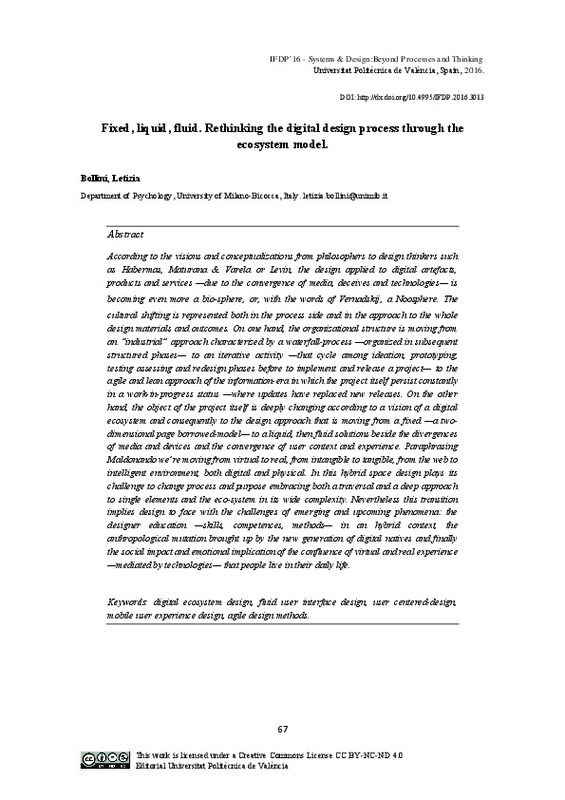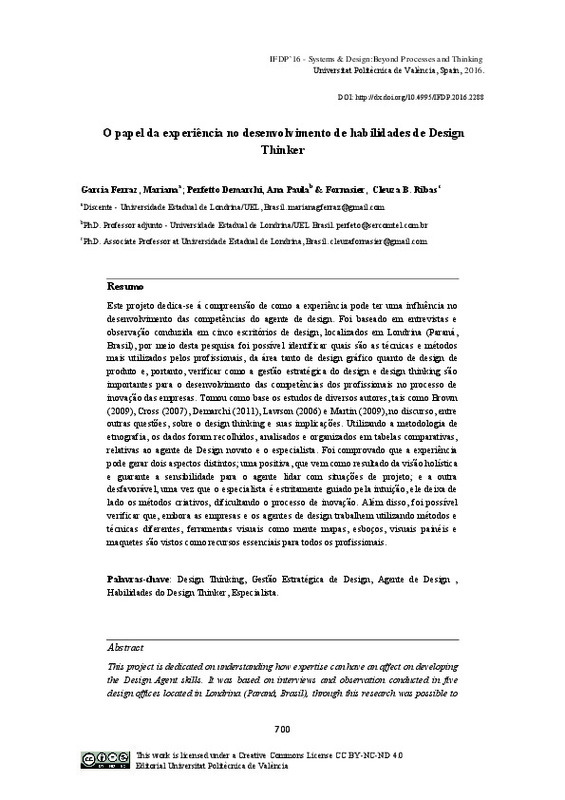JavaScript is disabled for your browser. Some features of this site may not work without it.
Buscar en RiuNet
Listar
Mi cuenta
Estadísticas
Ayuda RiuNet
Admin. UPV
Fixed, liquid, fluid. Rethinking the digital design process through the ecosystem model
Mostrar el registro completo del ítem
Bollini, L. (2016). Fixed, liquid, fluid. Rethinking the digital design process through the ecosystem model. En Systems&design:beyond processes and thinking. Editorial Universitat Politècnica de València. 67-74. https://doi.org/10.4995/IFDP.2015.3013
Por favor, use este identificador para citar o enlazar este ítem: http://hdl.handle.net/10251/87561
Ficheros en el ítem
Metadatos del ítem
| Título: | Fixed, liquid, fluid. Rethinking the digital design process through the ecosystem model | |
| Autor: | Bollini, Letizia | |
| Fecha difusión: |
|
|
| Resumen: |
[EN] According to the visions and conceptualizations from philosophers to design thinkers such
as Habermas, Maturana & Varela or Levin, the design applied to digital artefacts,
products and services —due to the convergence ...[+]
|
|
| Palabras clave: |
|
|
| Derechos de uso: | Reconocimiento - No comercial - Sin obra derivada (by-nc-nd) | |
| ISBN: |
|
|
| Fuente: |
|
|
| DOI: |
|
|
| Editorial: |
|
|
| Versión del editor: | http://ocs.editorial.upv.es/index.php/IFDP/IFDP/paper/view/3013 | |
| Título del congreso: |
|
|
| Lugar del congreso: |
|
|
| Fecha congreso: |
|
|
| Tipo: |
|











